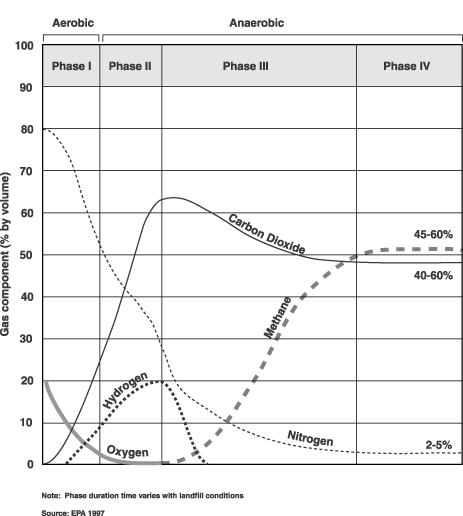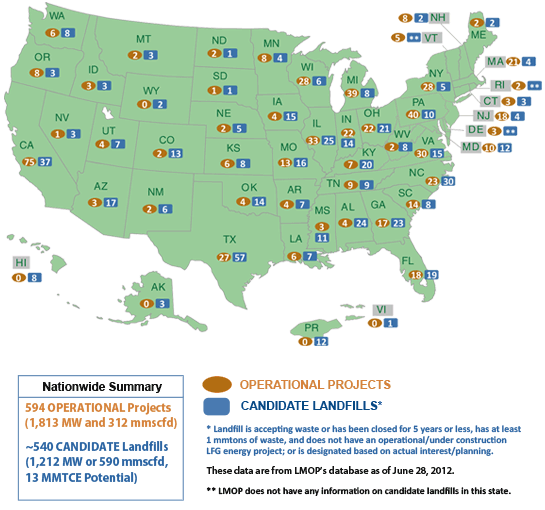Landfill gas is utilized at 80 sites within Waste Management INC, within the United States. Waste Management provides energy for 400,000 homes within the United States from converting their landfill gas to energy. This video takes you through the process of turning landfill waste to energy through the Waste Management Inc’s process. Landfill gas to energy reduces the carbon footprint of your waste and allows a sustainable solution without letting the gasses off-gas into the environment.
As communities grow, the demand for renewable energy is increasing. Waste Management is helping to fill this need by using waste from homes and businesses across North America to generate electricity. Currently, Waste Management produces enough electricity to power more than four hundred thousand (400,000) homes to have source of renewable energy called landfill gas. Today’s modern landfill uses advanced engineering to dispose waste and protect the environment. At more than eighty (80) Waste Management sites, renewal energy plants produce electricity using naturally occurring landfill gas.
The process begins when waste is collected. One person produces an average of four and a half pounds (4.5 lbs) of trash everyday. While some waste can be recycled, a portion is taken to a landfill for safe disposal. Once inside the landfill, waste decomposes to produce methane. Landfill gas, comprised of about fifty percent (50%) methane, is collected using an underground network of pipes and wells. From this network, the gas is drawn to a renewable energy facility compression system where the gas is dewatered, pressurized, and filtered to make it clean. When landfill gas enters this system, it first passes through a filter, which removes any large pieces of debris and some liquids that may have become mixed with the gas. After initial filtering, it enters a compressor, which raises its pressure until it’s high enough for the gas to be used as a fuel. During compression, the temperature of the gas rises and must be cooled down by an aftercooler. Inside the aftercooler, the temperature of the gas is lowered, which allows for any remaining moisture to be condensed. The gas is then filtered the second time to remove the condensed moisture. At this stage, the gas is reheated to prevent any further condensation, and is ready to be used as a renewable energy fuel. The whole process, from start to finish, takes seconds.
Waste Management renewable energy facilities– you see there an engine or a turbine to generate power. Both follow the same basic principle to produce electricity. An engine that runs on landfill gas really isn’t that different from a car engine. It’s equipped with pistons, and air filter, exhaust, radiators, and even batteries. Landfill gas enters the engine and is combusted, causing the pistons to spin a drive shaft. The drive shaft is connected to a generator, which converts the power into electricity. The electricity is then sent to state of the art control systems, which ensure that the plant is meeting the needs of the utility. Control systems direct electricity to transformers located on site, which either raise or lower the voltage. Lower voltage electricity is used to power equipment with their renewable energy facility. While high voltage electricity is exported to the utility grid to supply energy for communities and businesses.
With new plants appearing every year at Waste Management landfills, the amount of renewable energy we provide is positioned to grow for years to come. Most people forget about their trash as soon as it leaves the curb. At Waste Management, our goal is to be the industry leader in finding innovative uses for waste whether it’s still recycling, composting, or creating renewable energy. Waste Management is committed to using trash as a resource to help communities meet their energy needs.



